The Thad Review: “Looney Tunes: Collector’s Vault Vol. 1”
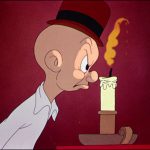
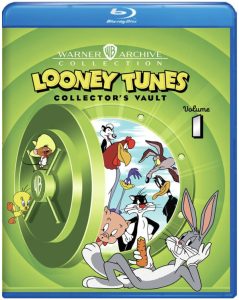 Warner Archive Collection has followed up its killer Looney Tunes: Collector’s Choice series with something even better: Looney Tunes: Collector’s Vault Vol. 1. It’s a continuation of producers Jerry Beck and George Feltenstein’s goal to get as many of the classic Warner cartoons to physical media as possible, only now it’s two discs for almost the same price! You’d have to be looney not to get it.
Warner Archive Collection has followed up its killer Looney Tunes: Collector’s Choice series with something even better: Looney Tunes: Collector’s Vault Vol. 1. It’s a continuation of producers Jerry Beck and George Feltenstein’s goal to get as many of the classic Warner cartoons to physical media as possible, only now it’s two discs for almost the same price! You’d have to be looney not to get it.
With the advent of MeTV Toons now broadcasting almost every old cartoon ever on a daily basis, it’s getting more recognized that the Golden Age of animation sometimes wasn’t so golden. The Warner cartoons are the exception: their track record is lightning in a bottle, and there’s a streak of some two decades in which the studio rarely produced anything legitimately bad. (Ironically, this collection begins with a cartoon from failed directing pair Ben Hardaway and Cal Dalton, the last time producer Leon Schlesinger would get rid of directors he didn’t like in favor of keeping ones that he did.) The result is that it’s a struggle to compile a Warner collection that doesn’t have mostly classics. However, every well eventually runs dry, so it was a very smart thing to move the home video series in this new two-disc direction.
Disc one continues the theme of Collector’s Choice: using only cartoons that have never been on physical media in restored versions. And we are getting into the latter half, quality-wise, that wouldn’t be anyone’s first choices: ‘30s Merrie Melodies that aren’t part of the renowned house style, auto-pilot chase cartoons from the ‘50s onward, etc. But even with what’s left, we still get a good share of funny moments and interesting history. We’re also gifted with three brand new beautiful-looking restorations specifically for this disc: Friz Freleng’s grim Each Dawn I Crow and Tex Avery’s A Day at the Zoo and Of Fox and Hounds.
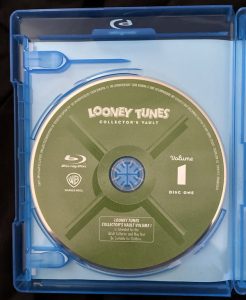 Disc two exploits the fact that Warners has remastered 90% of the Looney Tunes library in high-definition, going back some 20 years, so they’re all Blu-Ray ready. This disc is cartoons that may have been restored on DVD but have never been issued to Blu-Ray. And at this point, the complaint of “double-dipping” is stupid and irrelevant (and I think there was some viral news about how those mid-2000s Warner discs don’t work anymore). This is where the real entertainment starts: back-to-back classics with all the characters from all directors, making you wonder why they didn’t start this concept a decade ago.
Disc two exploits the fact that Warners has remastered 90% of the Looney Tunes library in high-definition, going back some 20 years, so they’re all Blu-Ray ready. This disc is cartoons that may have been restored on DVD but have never been issued to Blu-Ray. And at this point, the complaint of “double-dipping” is stupid and irrelevant (and I think there was some viral news about how those mid-2000s Warner discs don’t work anymore). This is where the real entertainment starts: back-to-back classics with all the characters from all directors, making you wonder why they didn’t start this concept a decade ago.
Collector’s Vault Vol. 1 is almost a history lesson in modern restoration at Warners—different tastes and standards had varying results, but, with one exception, they still look mostly just fine whenever they were done. Most of the cartoons that originated on the Golden Collection sets two decades ago didn’t have much digital clean-up, so, as with the Tom & Jerry Cinemascope set, they’ve been freshly spiffed up, carefully, quite a bit here. Some of the earlier versions without clean-up (like Bye, Bye Bluebeard) did look particularly dirty, so going the extra mile here is appreciated.
We do unfortunately have one cartoon, Tom Turk and Daffy, that came from a period in the 2010s where hack colorists crushed the blacks and everything looks far too dark on some 100+ circulating transfers of Warner and MGM cartoons (the ones done for the cancelled Tom & Jerry Golden Collection Vol. 2 are so bad it’s a good thing it never got released). While WAC did marginally improve how it looked on the old Super Stars DVD, if one cartoon on this set should have been completely done over, it’s this one.
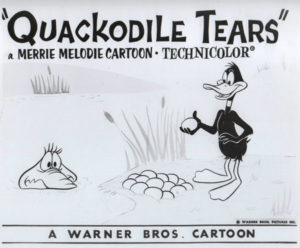 While the picture quality here gets mostly full marks, the lackluster audio, often originating from 1990s transfers, is getting difficult to excuse in this day and age (even on the newly restored Each Dawn I Crow, the audio quality takes a nosedive in its second half). And it does stink that we’re stuck with WAC trying to fix the “Photoshop” titles on the masters done for HBO Max rather than just going back to the raw scan (some howlers still made it through, like a jump cut rather than a dissolve in Quackodile Tears, and some appalling clone stamp artifacting on the director credit for A Kiddie’s Kitty).
While the picture quality here gets mostly full marks, the lackluster audio, often originating from 1990s transfers, is getting difficult to excuse in this day and age (even on the newly restored Each Dawn I Crow, the audio quality takes a nosedive in its second half). And it does stink that we’re stuck with WAC trying to fix the “Photoshop” titles on the masters done for HBO Max rather than just going back to the raw scan (some howlers still made it through, like a jump cut rather than a dissolve in Quackodile Tears, and some appalling clone stamp artifacting on the director credit for A Kiddie’s Kitty).
In a non-existent physical media market, however, the small WAC department is to be commended they did the best with what they have to work with, and the shortcomings don’t impact the enjoyability of the cartoons themselves. And fortunately George F. did make sure those Golden Collection transfers were done correctly back in the day, so there’s little to worry about even two decades later.
In short, Looney Tunes: Collector’s Vault Vol. 1 is exactly what collectors want: Warner cartoons we don’t have on Blu-Ray already, with exceptionally few distracting issues. It’s a great balance of obscurer curios for the diehards, and also enough all-time masterpieces to make it an easier sell to more casual fans (with the “cancelled” Pepe and Speedy fully and proudly present on the cover).
Notes and commentary follow…
Disc One
Bars and Stripes Forever (1939, Ben Hardaway and Cal Dalton)
One of the misbegotten cartoons, this one spot-gags about a prison, from director team Ben Hardaway and Cal Dalton, a pairing that only proved Leon Schlesinger had to get Friz Freleng back as soon as possible. Not a great opener.
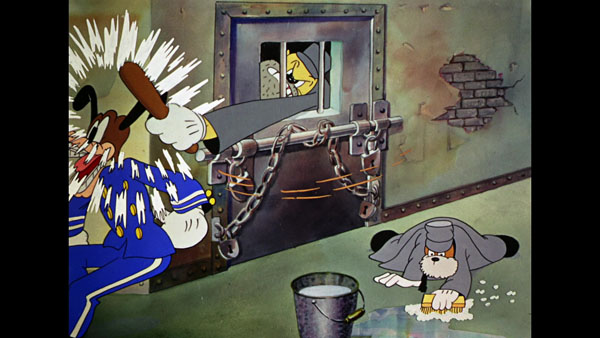
Beauty and the Beast (1934, Friz Freleng)
One of the earliest Warner cartoons in color (this one in Cinecolor), and an awkward outright attempt at making a Disney Silly Symphony on a fraction of the budget.

A Day at the Zoo (1939, Tex Avery)
Making its restoration debut, one of the many, many spot-gag cartoons Avery would make, this one taking place at the zoo. Egghead channels new radio star Lou Costello (before he made it to pictures) and is eaten by a lion. “I’m a baaad boy.”
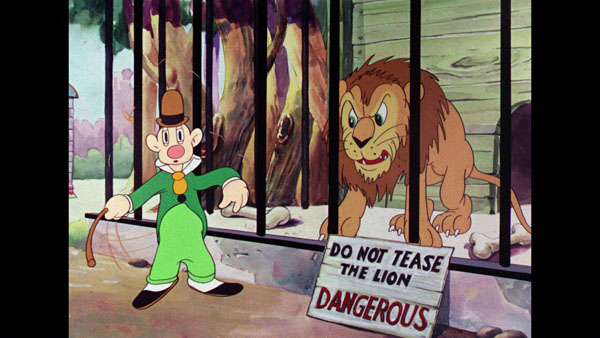
The Dixie Fryer (1960, Robert McKimson)
The second (and best) cartoon with hawks Pappy and Elvis (both voiced by Daws Butler), who want to make a meal out of traveling Foghorn Leghorn. The only cartoon where Foggy is in actual danger from a non-pint-sized predator, it’s interesting to see that even when he’s in a role more suited for Bugs or Daffy, he still gets it as bad as his adversaries.
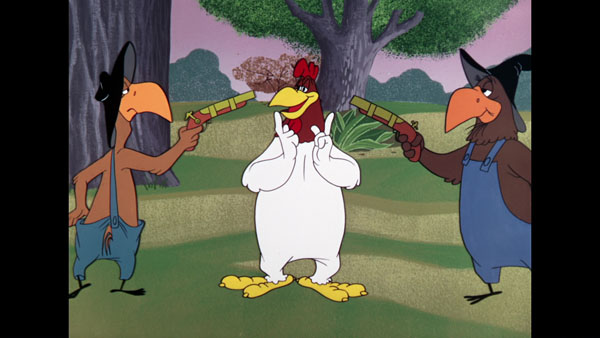
Double or Mutton (1955, Chuck Jones)
So good, they had to have it twice in two successive releases? We’ve been promised Vol. 2 will have an extra cartoon to make up for this error.
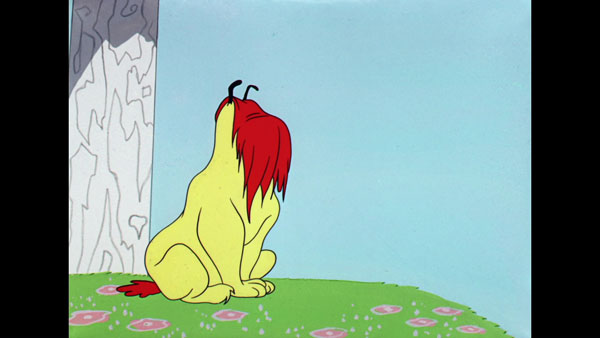
Each Dawn I Crow (1949, Freleng)
A parody of the radio show Inner Sanctum, with the neurotic and homicidal John Rooster misinterpreting Farmer Elmer Fudd’s intentions. Jerry hates this one, but I always thought it was one of a handful of dark Freleng classics. It also has a throwaway scene that perfectly epitomizes Elmer’s stupidity: him jovially accepting the duck decoy hat and a death sentence while doing his stupid laugh.
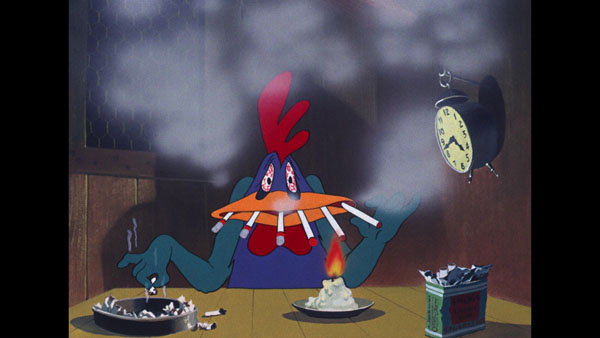
Easy Peckin’s (1953, McKimson)
One of those retrograde cartoons McKimson often made that feels like it could’ve been made years earlier, with generic blackout gags about a burly rooster versus a panicky fox. Bizarrely ignores the fact his unit actually came up with a rather colorful barnyard cast. “Ya shouldn’t have done it, George!”
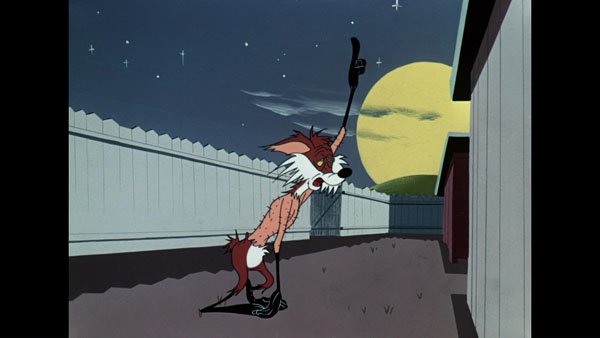
Feather Dusted (1955, McKimson)
Foghorn tries to educate Egghead Jr. on manly games, only to be shot several times.
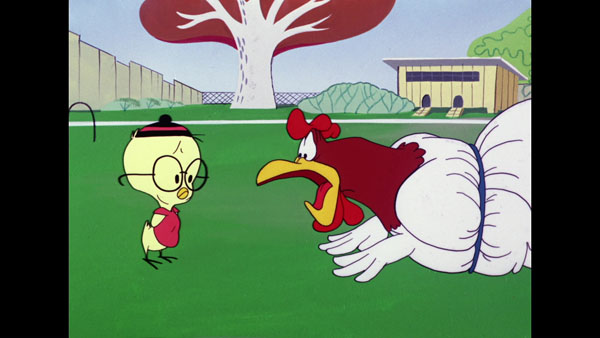
A Fox in a Fix (1951, McKimson)
McKimson’s passive aggressive chummy bulldog in his last appearance, this time putting a fox disguised as a dog through the wringer.

Good Night Elmer (1940, Jones)
Elmer in a comedy of frustration against a candle that keeps him up all night. The closest Warners got to making a cartoon that could’ve been made in live-action, though Oliver Hardy or Edgar Kennedy this ain’t. So plodding, even the old HBO Max description warned that you probably shouldn’t watch it.
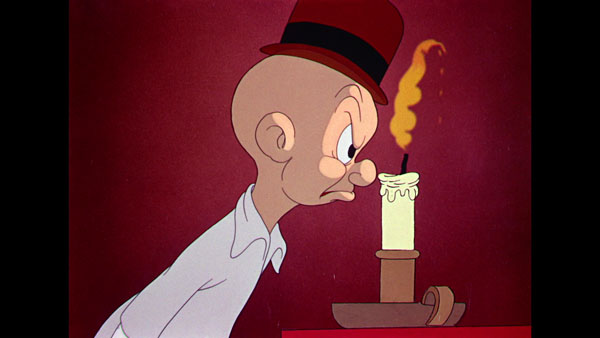
The Goofy Gophers (1947, started by Bob Clampett, finished by Art Davis)
Mac and Tosh in their debut, raiding a garden guarded by the Shakespearean dog (in his debut, too). Bob Clampett started this cartoon and got it through the voice recording before he left in 1945. Art Davis picked it up when he inherited the unit, threw out all of Clampett’s roughs (he couldn’t make heads or tails of them), and carried it through production. Evidence that, contrary to what the true believers want you to think, Clampett knew which way the wind was blowing in the industry and the kind of cartoons a more limited production model would favor.

I’d Love to Take Orders from You (1936, Avery)
Noteworthy as an early Avery cartoon with no actual jokes, and for a lot of live-action reference footage being shot for the scarecrow kid trying to scare the crow (seen in Bugs Bunny Superstar).
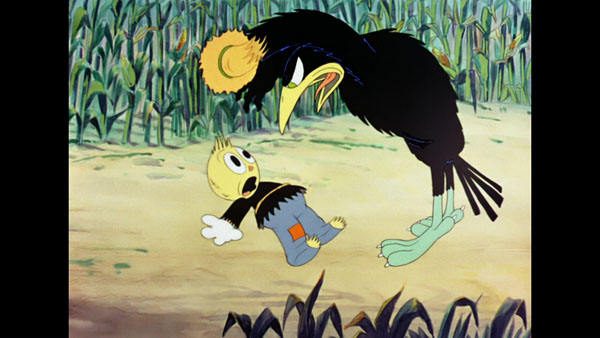
A Kiddie’s Kitty (1955, Freleng)
The sadistic child Suzanne adopts Sylvester and uses him to demonstrate several household appliances. Believe it or else, Suzanne actually took on life in a regular feature in the Western Publishing comics (one with Marc Anthony and Pussyfoot, yet).
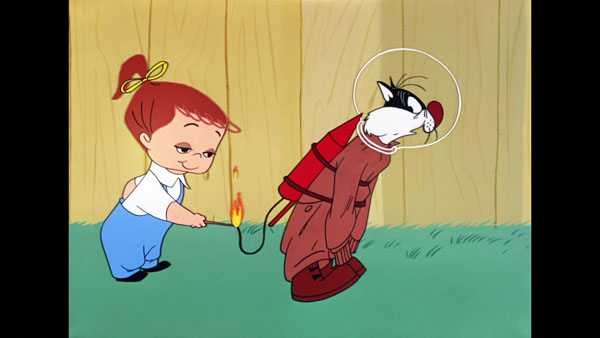
Let it Be Me (1936, Freleng)
Emily the Chicken is lured away from her bumpkin beau Clem by a rooster version of Bing Crosby, who immediately kicks her to the curb. Clem travels to the city to beat the hell out of Bing. Curiously, this was *not* the cartoon Crosby threatened to sue over for the less than flattering depiction (it was Bingo Crosbyana).
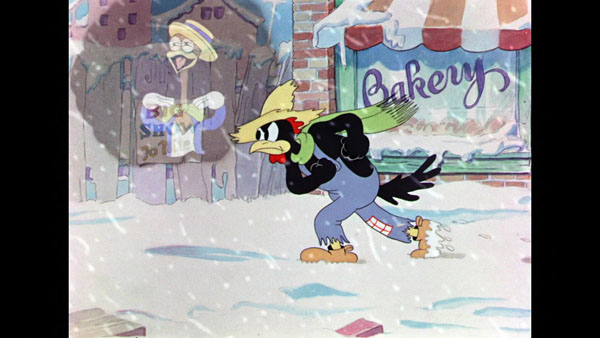
Of Fox and Hounds (1940, Avery)
One of the last real important Warner cartoons that needed restoration badly (it looks beautiful here). Avery begins his career-long fascination with Lon Chaney Jr.’s portrayal of Lennie in Of Mice and Men, with Willoughby the dog (voiced by Tex himself) who just can’t seem to catch a fox or break. Like Crackpot Quail, Avery tries slapping a different animal costume onto the Bugs Bunny voice and persona he unveiled earlier in 1940, but the fox (and quail) is a nothing. Your sympathy’s always with the dog.
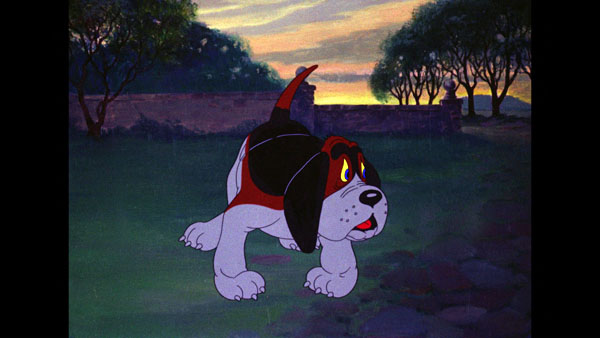
Quackodile Tears (1962, Davis)
Henpecked Daffy tries to reclaim his wife’s egg from a doting crocodile father. Davis, no longer a Warner employee, “directed” this cartoon freelance, only doing the character layouts and having a meeting with the animators, which may explain its utterly detached, soulless quality.
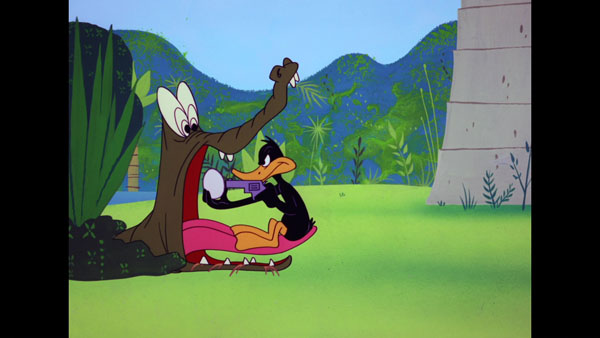
Ready, Woolen and Able (1960, Jones)
Another workday ends with Ralph Wolf in a straightjacket. Jones and Maltese pay homage to their pal Tex Avery’s own dog and wolf shorts for this cartoon’s final minutes.

Robin Hood Makes Good (1939, Jones)
Almost a tie-in for Warners’ The Adventures of Robin Hood, with a couple of squirrels obsessed with the legend being taken in by a fox posing as Maid Marian.
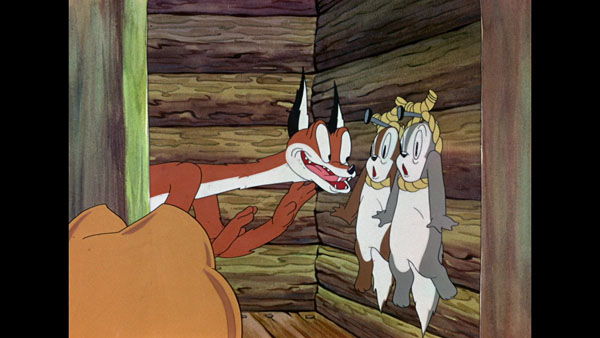
The Squawkin’ Hawk (1942, Jones)
Henery Hawk makes his debut (voiced here by Kent Rogers) in Mike Maltese’s first collaboration with Chuck Jones. The pair abandoned the character, but he took on life in a rather affable feature in the Looney Tunes comic books, and eventually Henery was “adopted” by McKimson to team with what proved to be a much more popular character.

Terrier-Stricken (1952, Jones)
Household violence with Claude Cat and Frisky Puppy in this rather unremarkable entry, a rarity for the Jones-Maltese team in this period.
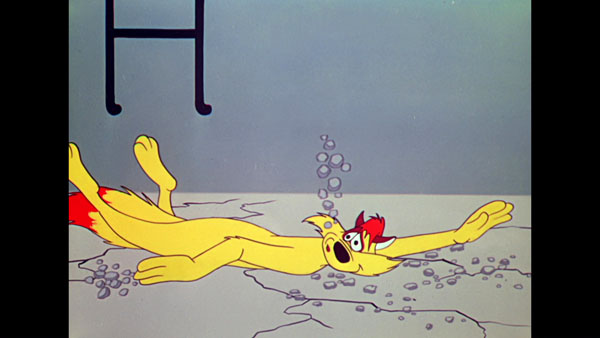
Tweet and Lovely (1959, Freleng)
Sylvester adopts a Wile E. Coyote-ish penchant for inventions that fail to catch Tweety or evade Hector, including a robotic dog that immediately mauls the cat.

Tweety’s Circus (1955, Freleng)
A Sylvester and Tweety romp in a desolate big top that ends with the psychotic bird showcasing the cat’s murder by way of lions.
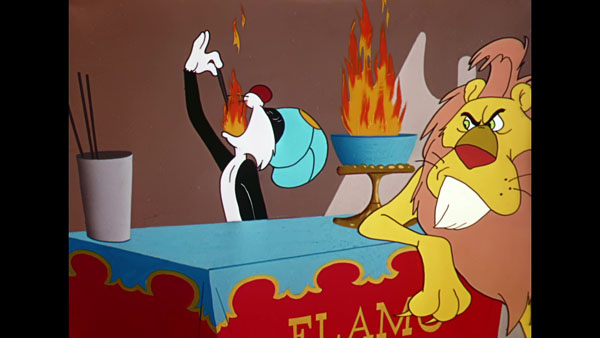
Two’s a Crowd (1950, Jones)
Claude Cat tries to do in birthday present Frisky Puppy, only to wreck the house’s furnace.
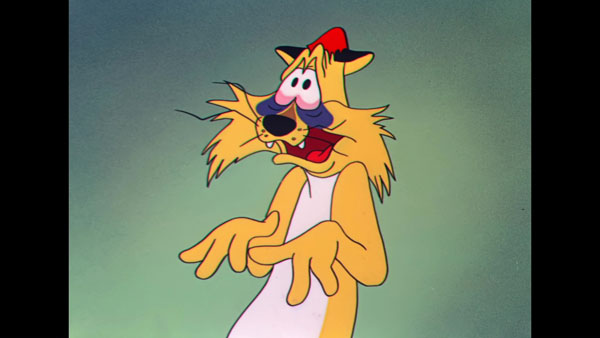
Wild About Hurry (1959, Jones)
The one with the Acme Indestructo Steel Ball. More noteworthy are the Latin names (Hardheadipus Oedipus, Batoutahelius) which are about as bawdy as a Jones cartoon got.
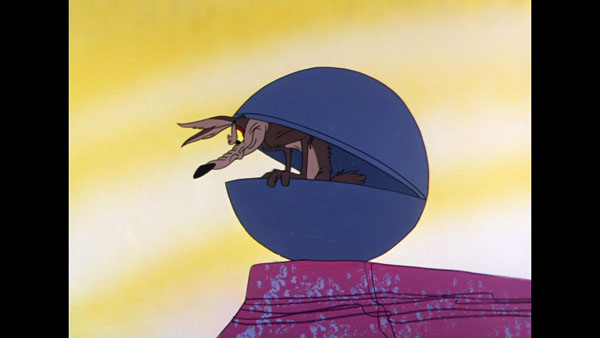
Zip n’ Snort (1961, Jones)
The one where the Coyote puts axle grease on his feet.
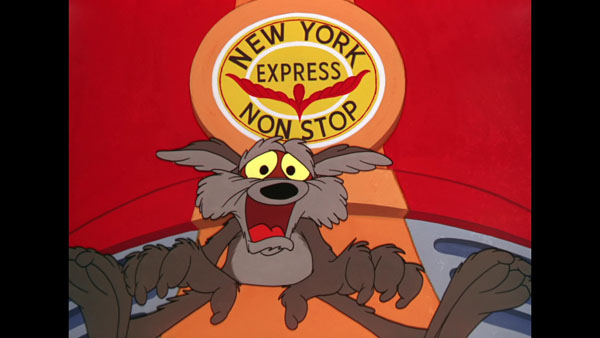
Disc Two
Ain’t She Tweet (1952, Freleng)
To catch Tweety, Sylvester must get past Granny’s yard full of bulldogs. Speaking to Greg Ford, Jones cited this one as an example of Freleng’s genius for presenting outrageous ideas matter-of-factly and plausible.
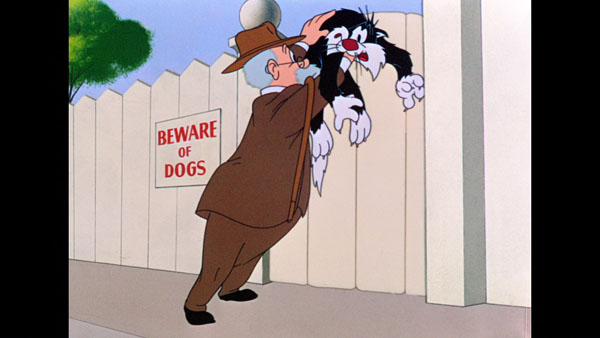
Banty Raids (1963, McKimson)
McKimson signs off with a hit with his last Foghorn Leghorn cartoon, though the real star is the disgusting beatnik rooster. “Sick, man, sick!”
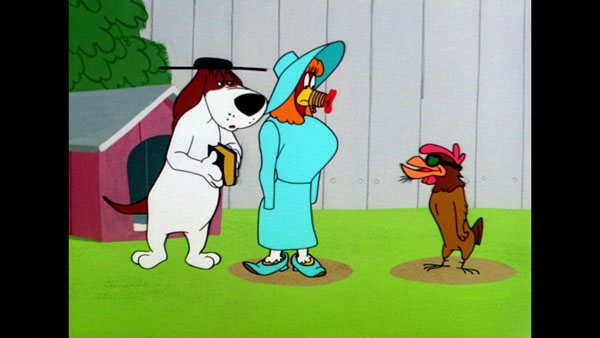
Birth of a Notion (1947, started by Bob Clampett, finished by Robert McKimson)
Immortal classic with Daffy conning himself a home for the winter, where his wishbone is needed for a scientific experiment. Another cartoon started by Clampett (he cast Stan Freberg as Peter Lorre, and did it again at Screen Gems in Cockatoos for Two), though McKimson deserves most of the credit for making it all work so beautifully with his trademark over-posing and beatings. “Oh you mad, impetuous boy you!”

Bye, Bye Bluebeard (1949, Davis)
The last cartoon from the Art Davis unit is one of his best, with Porky the victim of a home invasion by the homicidal maniac Bluebeard (and a poser mouse).
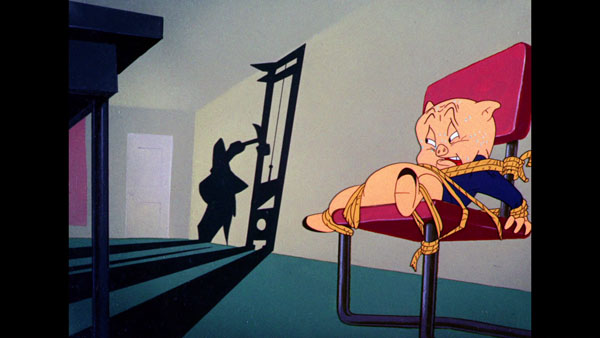
Cat-Tails for Two (1953, McKimson)
Benny and George seek Mexican food on an ocean liner. Speedy’s first appearance in a more “insensitive” form, before Hawley Pratt refined him. (Ironically, this is one of the only good Speedy cartoons MeTV has regularly played.)
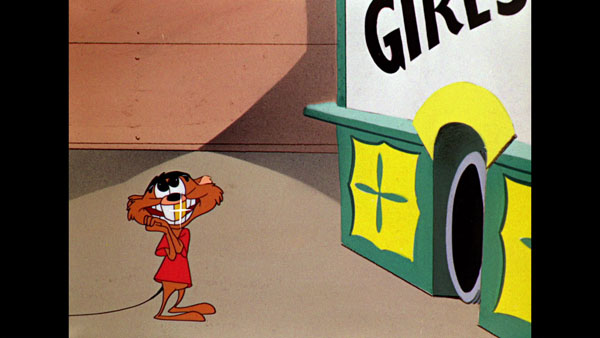
Daffy Dilly (1948, Jones)
Cheap laughs salesman Daffy gets more than he bargained for when he tries to inherit ailing buzzsaw baron J.P. Cubish’s fortune. The beginning of the Jones-Maltese postwar duck who’s always driven by greed/fame/envy.
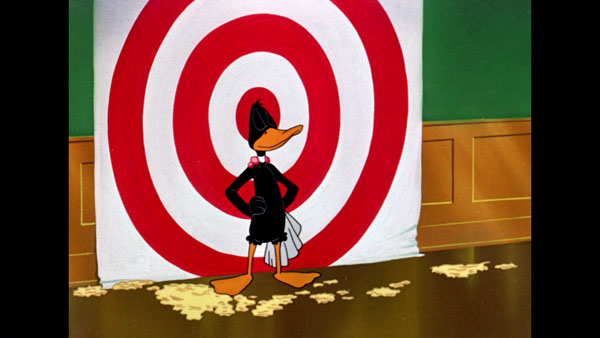
Daffy Duck and Egghead (1938, Avery)
Another immortal duck classic, with Daffy singing “The Merry-Go-Round Broke Down” (animated by Irv Spence). Served as the template for every studio’s screwball protagonist picture for at least a decade. The competition usually didn’t get what the cartoon and Avery tell us from the start, with both characters emerging from literal Nuts in May: the antagonist isn’t much saner. And that’s what makes it so funny. “Oofty-magoofty” indeed.

Gee Whiz-z-z-z-z-z-z (1956, Jones)
One of the best in the Road Runner series with every gag a winner, and features maybe the most famous pratfall in the series: the Acme Bat-Man’s Outfit (animated by Ken Harris). Ernie Nordli did the color and layouts, adding the unique flavor of every scene being in a different desert.
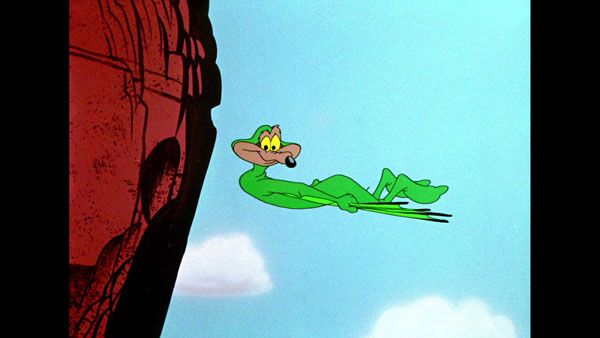
Gonzales’ Tamales (1957, Freleng)
The mice conspire to have gringo pussycat Sylvester run womanizer Speedy G. out of town. Freleng’s showmanship goes a long way in making a cartoon without a single likable character still pretty funny.
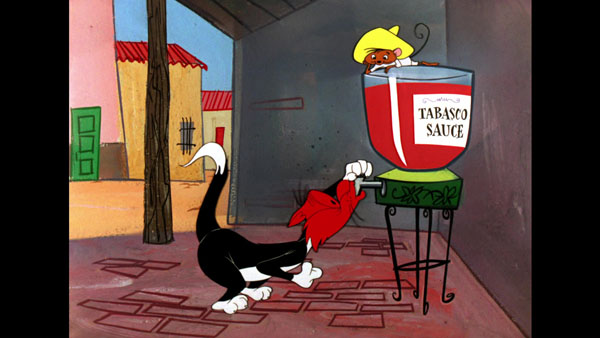
Hare Conditioned (1945, Jones)
Breakthrough cartoon for the Jones unit (co-written by Mike Maltese without credit) with Bugs pursued by burly bully, store clerk Gildersneeze (voiced by Dave Barry). “Kind of outsmarted you, eh, little chum?”
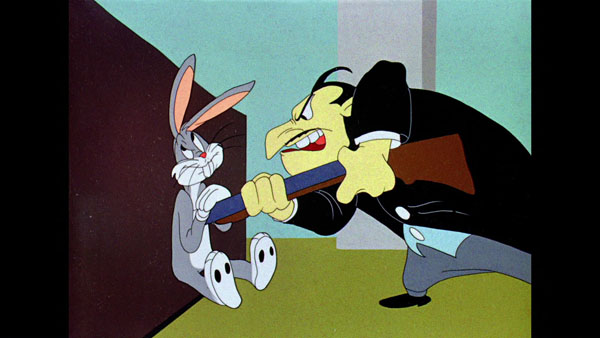
Hare Trigger (1945, Freleng)
And, a breakthrough cartoon for the Freleng unit (also written by Maltese), with Bugs in his first encounter with his greatest adversary, Yosemite Sam. Even with all the classics to follow, Freleng still cited the first one as his favorite of the series.

Hare Trimmed (1953, Freleng)
Good scout Bugs comes to the rescue when Sam decides millionaire widow Granny ought to get married.
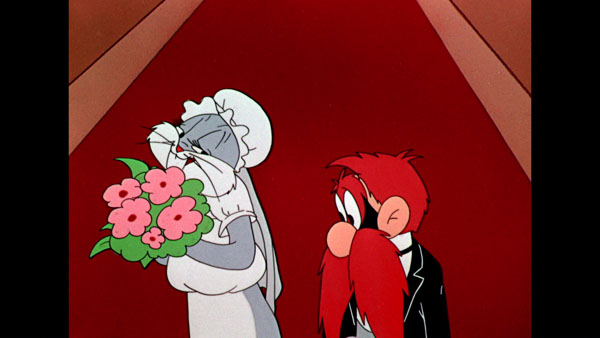
Horton Hatches the Egg (1942, Clampett)
The first wholly Bob Clampett cartoon with his golden unit, this adaptation of Dr. Seuss’ story with Horton the Elephant (voiced by Kent Rogers) is genuinely heartwarming. Just so you don’t forget who’s actually running this picture, there’s an inexplicable scene with a Peter Lorre fish blowing his brains out.
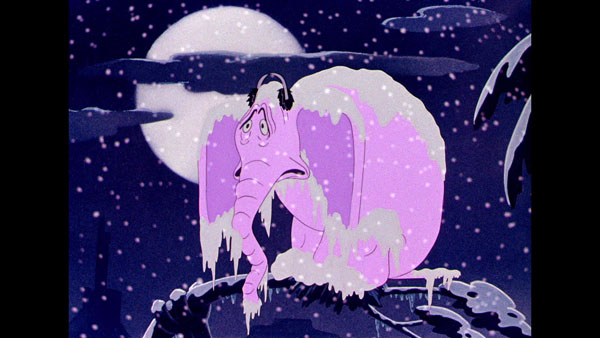
Little Boy Boo (1954, McKimson)
Foghorn’s first attempt as a father figure to Egghead Jr. that has too many great Leghornisms to count. “There’s somethin’ kinda YEEEEH about a kid that’s never played baseball.”
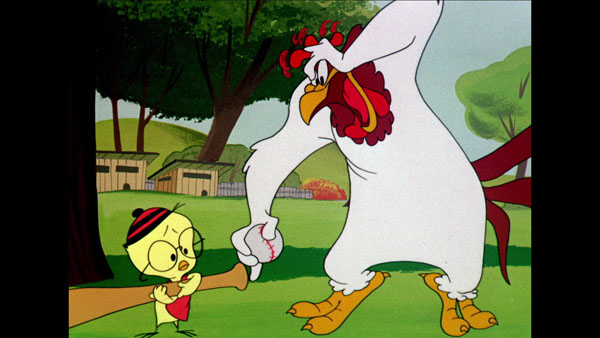
Much Ado About Nutting (1953, Jones)
A squirrel tries everything, including destroying a NYC block, to crack open a coconut, to no avail. Underrated pantomime picture that feels more like something Jones might have done ten years earlier, only now he’s a much better filmmaker with stronger collaborators.
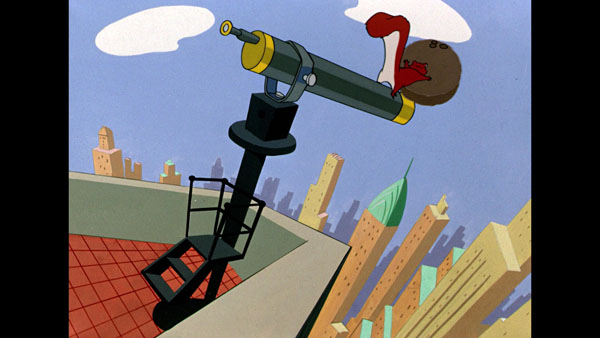
Odor-Able Kitty (1945, Jones)
What was first a comic book story by Mike Maltese launches a series (perhaps ill-advisedly), with a male cat disguised as a skunk pursued by the horny Pepe Le Pew. Notably ends with Pepe married with kids and his act being a put-on.

Past Perfumance (1955, Jones)
Pepe in pursuit of Penelope at a French movie studio in the silent era. During production, Jones commented to his daughter Linda in a letter that he was having too much fun with fractured French gags that take up most of this cartoon. Considering how much funnier all of those gags are than the Pepe chase (the sycophantic group of “oui-men” following a dirty old man director and his shapely secretary is trailblazing), perhaps he should’ve pursued that as the focus of the series. “Sacre PEW! Zat picture STINK!”
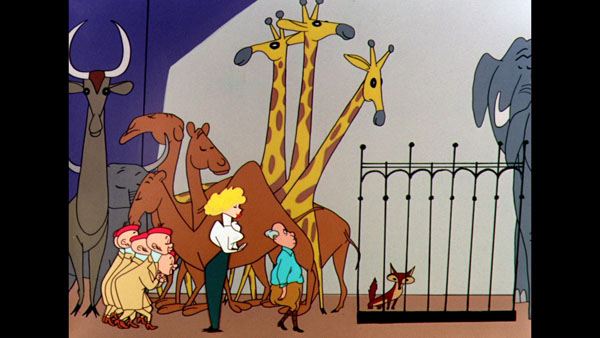
Porky’s Duck Hunt (1937, Avery)
Maybe one of the most important cartoons ever made, with duck hunter Porky (now voiced by Mel Blanc) encountering a truly daffy duck (animated by Bob Clampett). They’ve been skipping over the black-and-white Porkys in this series, so it’s nice to see an exceptional classic show up here.
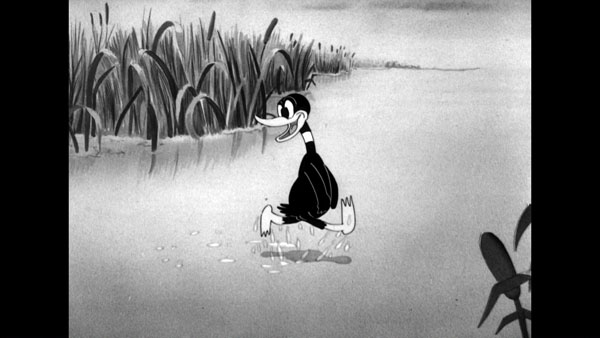

Rabbit Punch (1948, Jones)
Bugs versus the Crusher in a boxing match that goes on for so seemingly endless rounds. Maybe they’d have run out of film to finish it even if Bugs didn’t cut it!
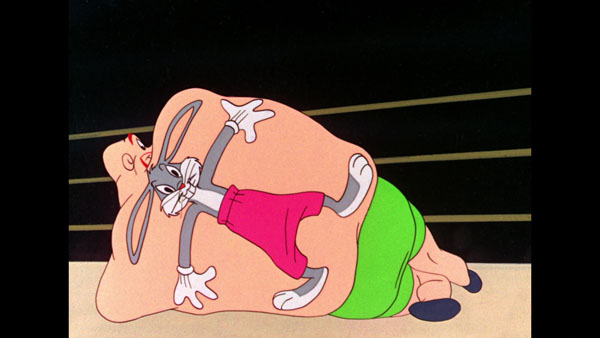
Red Riding Hoodwinked (1955, Freleng)
Fairy tale retelling with Sylvester, Tweety, that wolf that can’t remember a damn thing, and a Granny that might owe something to Jackie Gleason.

Rhapsody Rabbit (1946, Freleng)
Bugs plays piano against a mouse? I dissected the controversy over the similarities with Tom & Jerry’s Cat Concerto a decade ago, where I concluded it was all purely coincidental. Neither of them rank highly for me, but I’d give the edge to the Bugs cartoon since it’s simply funnier, as out-of-character as he is in it.
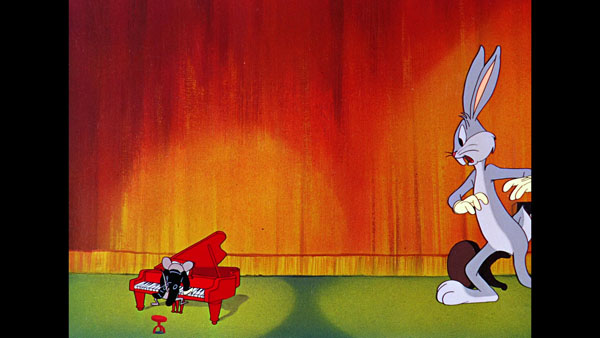
Snow Business (1953, Freleng)
Sylvester and Tweety are snowed in at Granny’s cabin with nothing to eat but bird seed. Potential monotony is broken up brilliantly by the abrupt introduction of a starving mouse who decides to eat Sylvester.
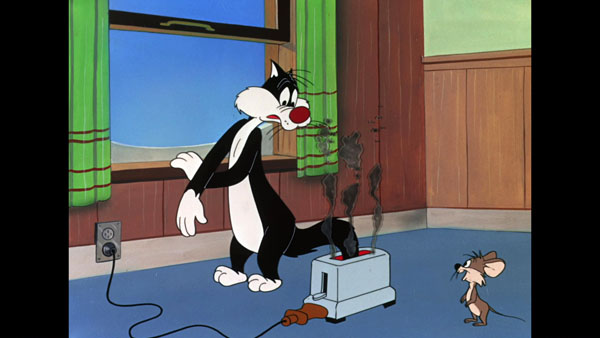
Tom Turk and Daffy (1944, Jones)
Glutton Daffy betrays Tom Turk’s whereabouts to pilgrim Porky, only to become the hunted himself. Another breakthrough Jones picture with streamlined layouts and poses that strengthen the acting. “The yams did it!”

Two Crows from Tacos (1956, Freleng)
The dimwitted duo of Jose and Manuel pursue a grasshopper. Tom Holland and Don Diamond voice the crows. The beginning of Freleng’s penchant for covering old stories and gags with broad Mexican caricatures, a concept that caused an uptick in the cartoons’ international popularity.
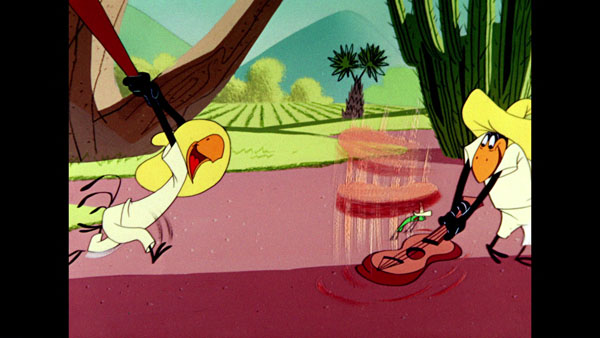
Zoom and Bored (1957, Jones)
Described once by historian Milt Gray as “the perfect Road Runner cartoon”, another one where every gag and pose is uniquely funny. The scene with the bomb chute is arguably the funniest in the series.

Over and out, see you for Vol. 2 later.
